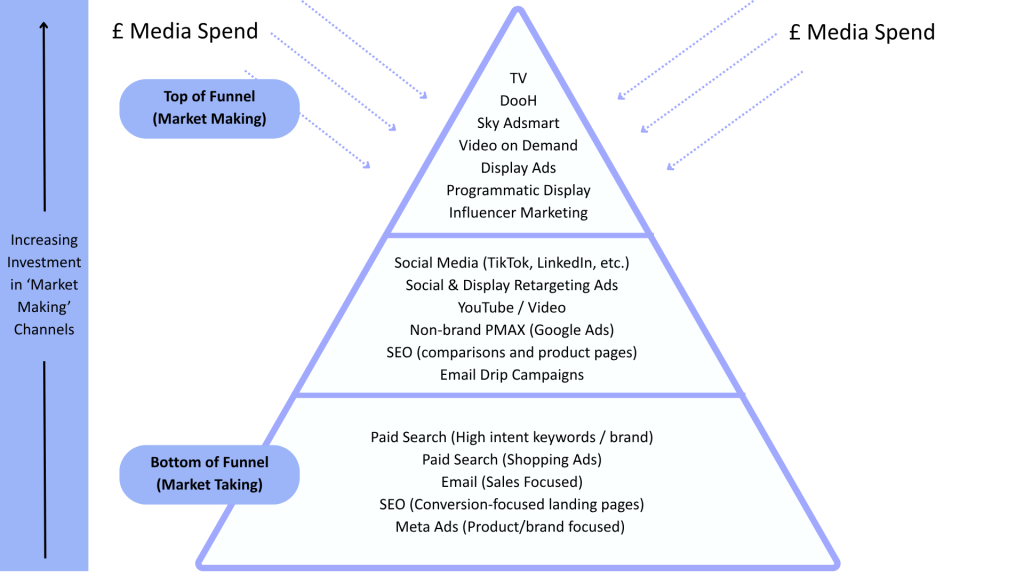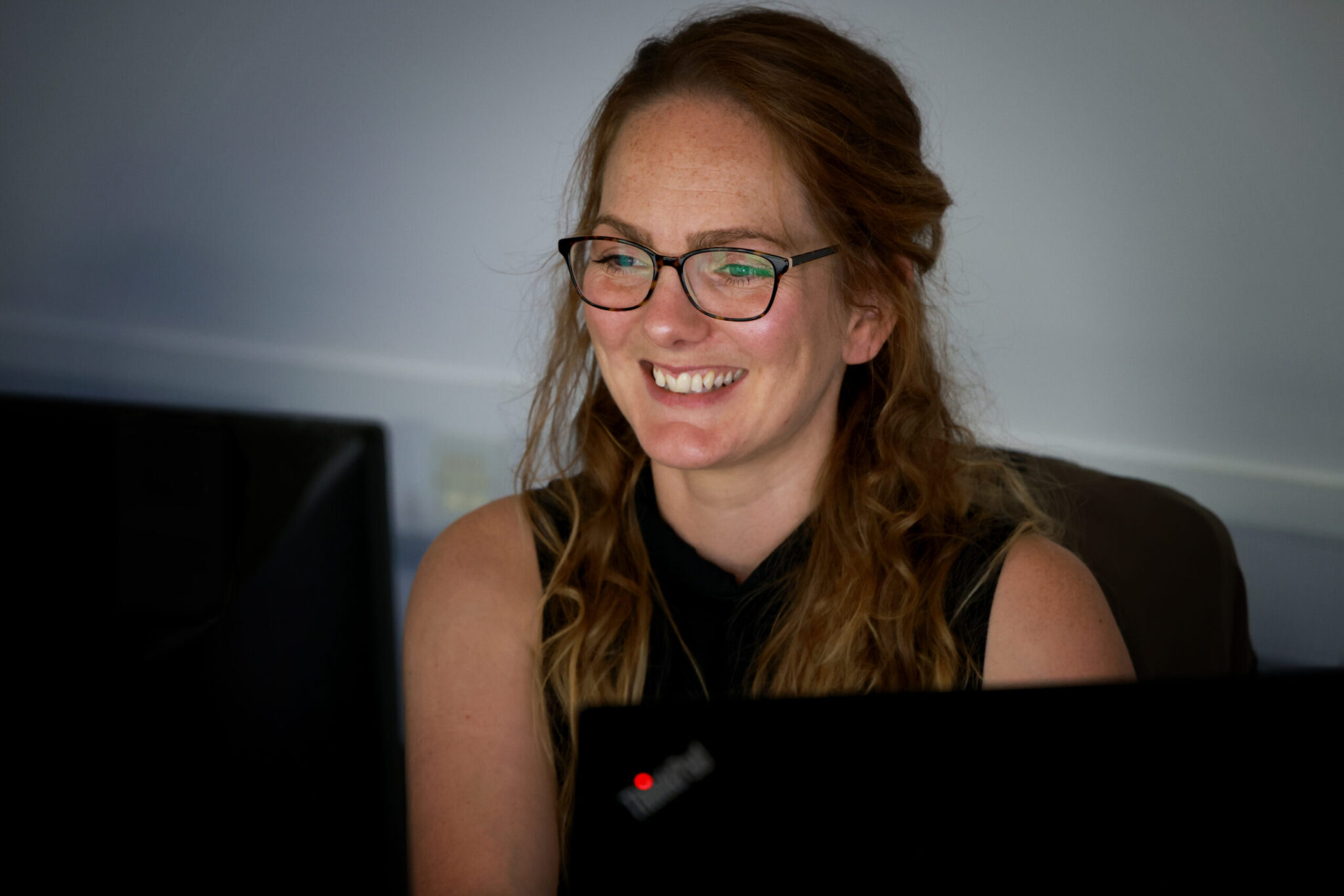How to Future-Proof Growth by Balancing Your Channel Strategy
Is your marketing mix too reliant on the same channels? In this blog, we’ll discover how diversification can unlock sustainable, profitable growth for your business.
Introduction
Let’s be honest… Google Ads and Meta have dominated digital acquisition for years. For both ecommerce and lead generation brands, they’ve been the comfortable default.
But as CPCs (Cost per click) continue to climb and competition tightens, the “safe zone” is starting to look risky. More brands are stretching paid budgets just to hit short-term sales targets, but this isn’t sustainable, and it’s rarely where real growth happens.
The brands winning right now are those testing, learning, and outsmarting their competitors with a broader mix of acquisition channels.
So, how do you know if your marketing mix is truly working for you and what should you be testing next?
In this blog article, we’ll explore:
- Typical traffic splits by channel
- The difference between market-making and market-taking activity
- How top-of-funnel activity fuels conversion
- How to balance CAC (Customer acquisition cost) while testing new channels
What’s the Risk of Sticking With the Same Channel Mix?
If your current mix is working, you’re hitting your CAC targets, and your customer lifetime value supports your growth plan – great. But have you looked ahead 6–12 months and stress-tested your forecast against a softer market or reduced brand loyalty?
Consumer confidence is low, and when that happens, shoppers drift toward marketplaces and price-driven decisions. We’re already seeing a reduction in search demand across many sectors, not because people are buying less, but because they’re discovering differently.
Social search, influencers, and AI-driven experiences are shifting behaviour faster than we can monitor!
Brands relying too heavily on Google Ads or Meta risk being caught off guard. Even investors are noticing. In our Digital Due Diligence work with Private Equity firms, we often see an over-reliance on one “hero” channel flagged as a growth risk.
In short, if you haven’t started testing new channels, the best time was yesterday. The second-best time is now!
What Does a Healthy Channel Mix Look Like?
There’s no one-size-fits-all answer, but based on current industry benchmarks and Infinity Nation’s 20 years of experience, here’s what a balanced traffic split typically looks like:
Ecommerce (Traffic Share Heuristic):
- SEO / Organic Search: 25%
- Email / CRM / Retention: 20%
- Paid Search (Google, Bing): 30%
- Social / Display / Prospecting: 15%
- Direct / Brand / Loyalty: 10%
Lead Generation (Traffic Share Heuristic):
- SEO / Inbound Content: 25%
- Paid (Google Ads / Search Ads): 25%
- Email / Nurture / CRM: 20%
- Social / Paid Social / Display: 15%
- Direct / Branded Traffic: 10%
- Referral / Partner / Word-of-Mouth: 5%
These proportions aren’t prescriptive; they are a guide for stability and resilience. The warning sign? Any single channel driving over 50% of total traffic.
We’ve seen brands lose £20k+ per week due to algorithm bugs or performance drops on Google Ads. If your “banker” channels falter, what’s your plan B?
Market-Making vs. Market-Taking Channels
Some channels capture demand that already exists (market-taking), while others create new demand (market-making).

Think of Google Ads and SEO as your harvesters, capitalising on people already searching. Meanwhile, channels like video-on-demand, programmatic display, and paid social prospecting build awareness and seed future intent.
When you visualise your mix this way, it becomes clear: sustainable growth depends on both. If you ignore the top of the funnel, you’ll eventually hit a ceiling on conversions.
Why Top-of-Funnel Activity Matters
Imagine you’re tasked with driving more new customers, but you’ve already maxed out your existing channels at your target CPA (Cost per acquisition).
So, you test Video on Demand. CPMs (Cost per Mille) are high, but you’re reaching fresh audiences and creating awareness that drives downstream efficiency.

That awareness triggers:
- More branded search queries
- Larger retargeting pools
- Higher engagement in paid social
- Stronger organic visibility
Each layer of your strategy feeds the next. This halo effect improves efficiency in your performance channels and balances overall CAC.

How to Balance CAC While Testing New Channels
If you’re serious about growth, you can’t measure every channel in isolation. ROAS (Return on ad spend) targets per platform are useful, but they miss the full picture.
Focus instead on blended CAC or TROAS (total return on ad spend) – metrics that connect back to profit.
How to create a testing budget:
- Ringfence it early. Build a fixed testing budget into your annual plan.
- Undercut your CPA. If you hit your targets with 80% of spend, reinvest the surplus into new channel experiments.
Testing isn’t reckless; it’s strategic learning. Controlled testing helps you evolve your mix before external forces (like algorithm changes or rising CPCs) force your hand. Remember to keep a testing timeline – log the results of your testing for future review and correlation against results!
Timing Is Everything: Consider Seasonality
If you’re planning to test new channels in November, it’s probably too late to influence Christmas sales.
Running tests in quieter months gives you two major advantages:
- Lower CPCs and CPMs, meaning cheaper entry costs
- Established retargeting pools, ready for high-demand periods
By the time peak season hits, your channels are optimised, data-rich, and primed to scale efficiently – protecting CAC and boosting profitability.
In Summary
- Don’t rely on one or two channels… consumer behaviour is evolving fast.
- Blend market-making and market-taking activity to sustain growth.
- Use profit-based metrics (CAC, TROAS) over per-channel ROAS.
- Test early, test smart, and feed insights back into your core channels.
The most resilient brands aren’t just optimising what works today – they are actively planning and preparing for what’s next.
Would you value a second opinion on your marketing mix and 2026 strategy?
👉 Request a no-pitch discovery call and explore where your next wave of growth will come from.
Infinity Nation Team Commentary
SEO Insight: Infinity Nation SEO Team:
“Investing in SEO and website performance stabilises CAC and future-proofs demand capture. SEO is a zero-sum game – to win, you must displace a competitor.”
Paid Media Insight: Infinity Nation Paid Team:
“The biggest mistake we see? Brands are over-investing in retargeting and under-investing in prospecting. Channels like Pinterest, Video on Demand, and Programmatic Display are still underused opportunities.”
Consultancy Insight — Infinity Nation Consultancy Team:
“We often start with a single channel, but sustainable growth comes from understanding the bigger picture. Brands tracking blended CAC or TROAS grow faster than those optimising in isolation.”
Author’s Note (the final word)
This article draws on insights from recent Ecommerce Collective events, where diversification was a key discussion point. The consensus? Brands testing early and broadening their mix are the ones thriving in uncertain times.
DO YOU WANT TO PUSH YOUR DIGITAL GROWTH STRATEGY FORWARD? LET’S CHAT.
Interested in working with INFINITY NATION to create a successful digital experience for your company or product?
Get in touch to set up a meeting with our team.
















